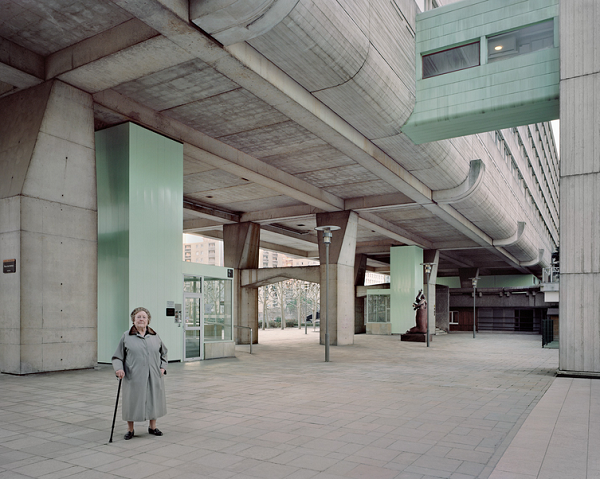
Photo: via Laurent Kronental
81-year-old Denise lives in a Grand Ensemble in the Parisian suburb of Ivry-sur-Siene.
Photo: via Laurent Kronental.
Any Francophile knows that the streets of Paris were overhauled in the mid-19th century by Napoleon III and Georges-Eugène Haussmann, giving the romantic city its distinctive wide avenues. But not far from Haussmann’s streets, in the city’s banlieues, lie 20th-century housing estates that appear otherworldly.
Parisian photographer Laurent Kronental is documenting these so-called Grands Ensembles, built for refugee and migrant housing post-World War II, in an ongoing series called “Souvenir d’un Futur”. The buildings, in true postmodern style, were designed by architects like Ricardo Bofill and Manuel Nunez-Yanowsky as a reaction to Le Corbusier’s style.
José, 89-years-old, stands on his balcony in Les Damiers, Courbevoie.
Photo: via Laurent Kronental
Today, the estate’s aesthetic is losing favor, like modernist architecture in other parts of the world. The grey concrete buildings, built quickly and cheaply due to urgent need, are aging along with their residents, and French media has been quick to depict them as dystopian visions. They’ve even been featured in disquieting films such as Brazil (1984), and more recently, The Hunger Games. But Krontental’s photographs portray the coldness of the architecture alongside the warmth of the resident’s presence and personal décor.
Perhaps these Grands Ensembles are like French wine or cheese, and they just get better with age.
90-year-old Josette in a Parisian housing estate.
Photo: via Laurent Kronental
Les Tours Aillaud, an estate in Nanterre.
Photo: via Laurent Krontental.
An interior in Les Tours Aillaid in Nanterre.
Photo: via Laurent Kronental.
Joseph, 88, dwarfed by the scale of the Les Espaces d’Abraxas estate where he lives in Noisy-le-Grand.
Photo: via Laurent Kronental.